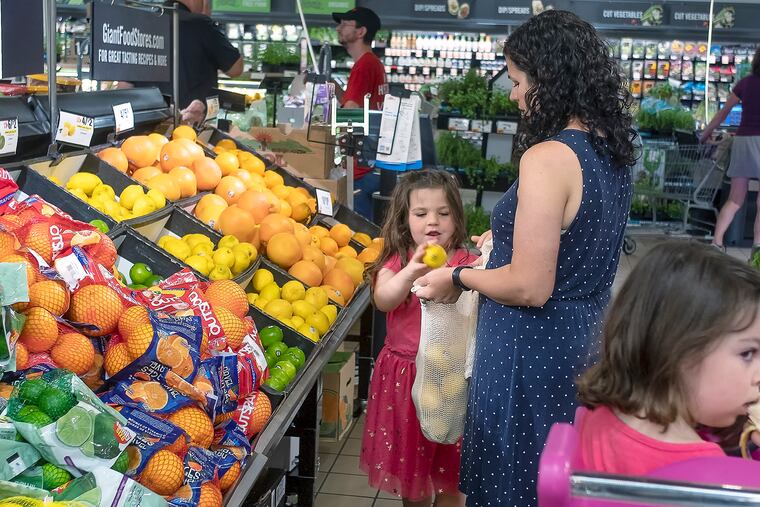The child tax credit is saving Philly families. We can’t let its expansions expire. | Expert Opinion
My patients need the money to improve their families’ health and well-being.

When Hurricane Ida struck Philadelphia last month, the city experienced historic flooding. We were all stunned by the images of highways underwater, cars floating by, and tornadoes striking the city’s suburbs. Yet for most of us, as the waters receded, so did the salience of Ida and its impact in our minds.
Many families were not so lucky. As a pediatrics resident in Philadelphia, I’ve cared for several patients since Ida with previously well-controlled asthma that has suddenly gotten worse. Multiple parents have told me they had flooding from the storm they can’t afford to fix. Others have struggled to find nutritious foods due to their grocery store being forced to close for repairs.
The hurricane is far from the only source of financial pressure on Philly families. A report from the Federal Reserve found that 40% of American adults wouldn’t be able to cover a $400 emergency. Even before the pandemic, Philadelphia had the highest poverty rate of the nation’s big cities, directly impacting more than one in three children. That number might be even higher now.
I hope we can all agree that no child should ever go hungry. The child tax credit (CTC), first created in 1997, has long been a popular and effective anti-poverty tool with bipartisan support, providing low- and middle-income families with additional support. In 2017, Republican senators spearheaded efforts to double the credit in the Tax Cuts and Jobs Act, signed by then-President Donald Trump in 2017. In President Joe Biden’s American Rescue Plan, the CTC received another expansion, increasing its yearly benefit from $2,000 per child to $3,000 per child over the age of 6, and $3,600 for children under 6 in eligible families.
The American Rescue Plan also made two critical functional changes to the program. A once-yearly benefit now includes monthly payments, which allow cash-strapped families to make purchases when they need them. It also fixed a major gap, allowing families who made too little income to file taxes or paid less than the full rebate in federal taxes — who have the greatest need — to receive the full CTC benefit. According to the Center on Budget and Policy Priorities, fixing this gap will help 27 million children, including half of all Black and Latino children.
“One family I met has been saving up their credit for home improvement projects that reduce environmental exposures for their children.”
If you have children, you may be one of the 36 million families who are eligible to receive these monthly payments. The impact has been striking. Within a month of the first payment, there was a drop in reported food insufficiency for households with children from 11% to 8.4%, even during a time where insufficiency was rising for adults without children. Half of respondents to Census Bureau surveys reported their increased spending was used to purchase food for the family.
But the CTC does so much more than just help families afford groceries. It gives them the flexibility to make urgent purchases for their family’s needs, such as repairing the damage from historic storms, procuring supplies to help their kid return to school, or simply purchasing enough diapers for their infant. I have seen its benefits firsthand. One family I met has been saving up their credit for home improvement projects that reduce environmental exposures for their children. Another has been able to purchase more fresh produce. For one, it simply has meant peace of mind when rent is due.
Yet, despite its massive popularity, these changes made by the American Rescue Plan are set to expire at the end of the year. Congress is currently debating the Build Back Better Act, which currently includes plans to make these recent expansions a permanent fixture, but it is at risk of being excluded from final negotiations.
» READ MORE: Not everyone who is eligible for the child tax credit is receiving it | Broke In Philly
Poverty creates negative lifelong outcomes for children, with family income linked to birthweight, maternal stress, and childhood nutrition. Family income is also predictive of future educational performance, substance use, and rates of college entry. Meanwhile, income creates opportunity, helping families escape the cycle of poverty and realize the American Dream. A recent analysis found that the expanded CTC’s investment in youth would generate eight times more value from societal benefits than the program’s costs. We have already seen a profound impact from the CTC expansion in just a few mere months.
The flexibility of the credit respects family autonomy, recognizing how their most important needs may shift over time — such as after a historic storm — and lets families take action in a much more nimble manner than any direct government intervention ever could. Let your elected representatives know that we need to continue to invest in American families, and the CTC should be a priority in any future negotiations. The improvements to the CTC must be preserved and expanded; we simply cannot afford not to.
Jeremy Jones, MD, is a pediatrics resident physician in Philadelphia.